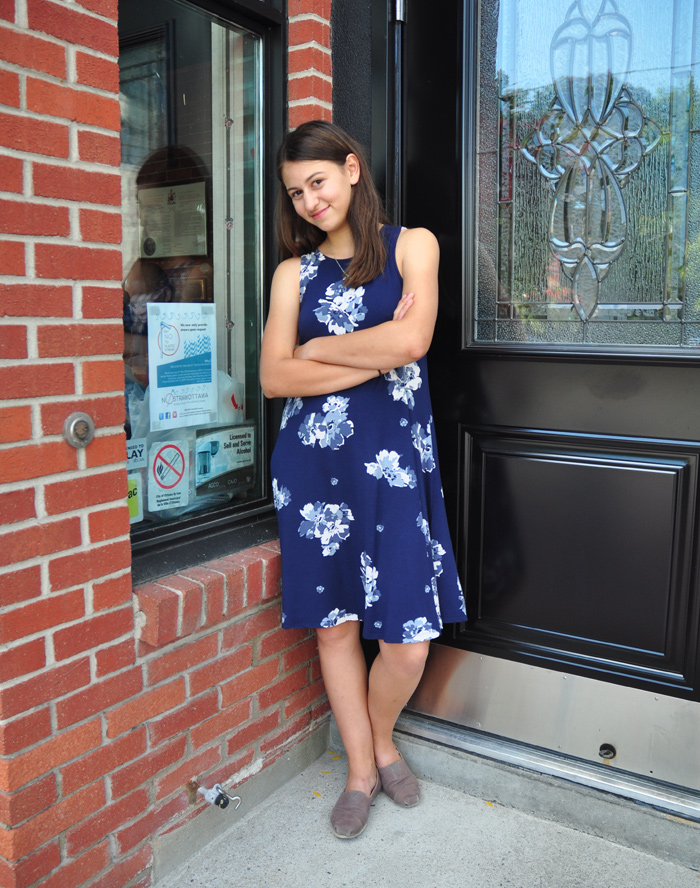By Bradley Turcotte –
Marine biologist Christine Figgener’s 2015 video of her team removing a plastic straw stuck in a sea turtle’s nose is difficult to watch. The distressed animal has blood trickling from his nose. He winces, clearly in pain, as the long object is extracted from his face. The video shows how the seemingly inconsequential act of using a disposable plastic straw can have serious environmental consequences.
Passionate about oceans and marine life since childhood, 15-year-old Nepean High School student Maelyn Kaya heard of the trend against plastic straws and thought, “someone has to do something” in Canada’s capital.
Maelyn is encouraging local businesses to offer alternatives or forego plastic straws completely with her No Straw Ottawa campaign.

Once heralded as the substance that would liberate the planet, it is estimated 40 percent of the 448 million tons of plastic produced each year is disposable.
And how much of this trash is washed into our oceans? Could your frappuccino drinking aid end up in a Costa Rican turtle’s nostril?
In 2015, University of Georgia engineering professor Jenna Jambeck estimated between 5.3 and 14 million tons of plastic waste enter oceans from coastal regions every year. This doesn’t include garbage from ships or fishing vessels.
Refusing traditional plastic straws “is a very small and simple change,” says Maelyn. “It is becoming such an important issue now that it is worth thinking about.”
Maelyn’s movement has been positively received. A walk through Westboro reveals many businesses have joined the refuse resistance. You can see the citywide list of businesses that have joined the cause, and which alternative they have chosen, on No Straw Ottawa’s website at nostrawottawa.wixsite.com/nostrawottawa.
Maelyn singles out Whispers Pub and Eatery on Richmond Road as being especially enthusiastic to switch to biodegradable straws.
Biodegradable straws are nearly identical to regular plastic, Maelyn explains, “except they are missing an enzyme in the polypropylene straws that prevents them from biodegrading.” These surrogate straws will decompose in 70 days, unlike regular plastic straws. Other substitute slurpers include straws made from paper, bamboo, glass, or metal.
However, for those belonging to the differently-abled community, plastic straws are a necessity. Differently-abled people may take longer to consume a beverage, leaving their paper straw to disintegrate and potentially cause a choking hazard. Metal straws heat up and could make drinking uncomfortable. Additionally, these folks may not be able to clean a reusable straw. With this community in mind, some restaurants, including The Wood on Wellington Street West, have a “straws upon request” policy.
Remaining environmentally-minded, Maelyn agrees plastic straws are essential for this segment of the population.
“Straws were invented for those people and they should be used for that reason,” she says.
In August, Maelyn met with Environment Minister Catherine McKenna to discuss No Straw Ottawa.
Yet every groundswell of action has detractors. Some critics of no-straw movements say it is not enough and is akin to changing your Facebook profile picture as a lazy show of support, a claim Maelyn swiftly addresses.
“I completely realize they are this tiny little percentage of what is actually in the oceans but the movement isn’t actually about straws. It is about the cultural change,” says Maelyn. “People start thinking about straws and then they will start thinking about plastics. Straws are just laying the groundwork for people to start being conscious about plastic consumption.”

